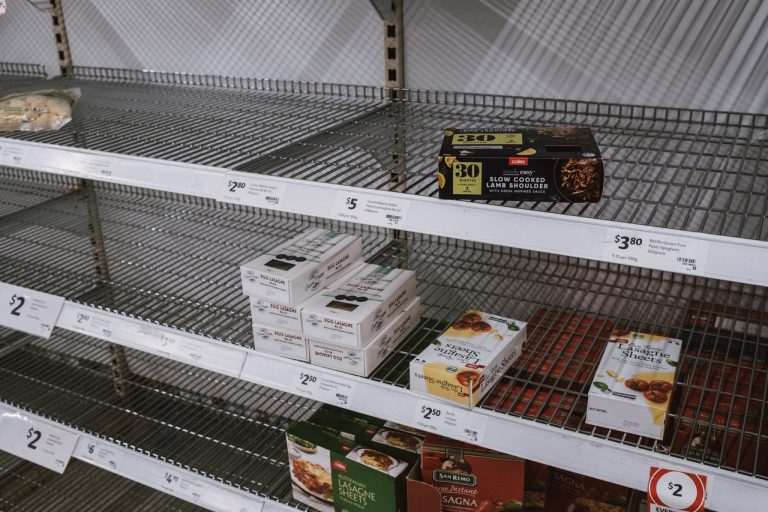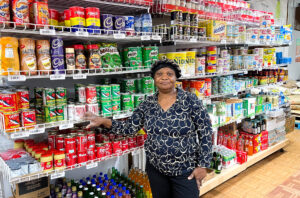Even if your favorite product hasn’t been affected by supply chain issues, you’ve heard the stories of others.
There was the Sarasota, Florida resident who wanted a customized tuxedo for his son’s wedding that never arrived. California’s almond producers are about to harvest the 2022 crop while 1.3 billion pounds of unsold almonds still sit in packing facilities due to limited oceanic carriers to take them to countries. And metro Phoenix residents had to do without fireworks on the Fourth of July because the city’s contractor couldn’t secure the pyrotechnics for the event.
Expect to hear the words ‘supply chain issues’ from companies throughout the rest of this year. The words are a carry-over from 2020 when supply chain experts could foresee a problem as global ports began to shut down leaving 60%-70% of oceanic containers from around the world at the United States’ ports.
Various products are still vulnerable to an array of weaknesses in getting to their destinations. But not all supplies have been disrupted. It’s up to business and investigative journalists to ask hard-hitting questions and dig deeper when hearing the words ‘supply chain issues.’ The goal is to identify if stalled products or business circumstances involve a weakened link in the supply chain or an undisclosed internal problem.
New policies created due to supply chain weaknesses
Hitendra Chaturvedi, Arizona State University business professor and expert on supply chain management, defines the supply chain as any movement of goods and services, money and people both forwards and backwards. Chaturvedi compared the movement of supplies to an employee’s daily commute to work. It used to be rare to be caught by a traffic light.
“We used to take that for granted,” he said, explaining when supplies used to seamlessly move from business to consumer. Now, that’s changed. “Imagine every traffic light is a stop and go.”
Another supply chain issue that started after the pandemic involves consumers not being able to send unwanted clothing back to retailers. Stores like Walmart, Sam’s Club and Lowe’s are weighed down with too much inventory, according to various news outlets. Instead of turning the inventory away, retailers have refunded consumers and allowed them to keep the merchandise.
CBS News reported on the nuances of the policies last year. Some retailers, like Walmart, have a “formula” to decide whether to allow a consumer to return a product.
“The policy is designed to reduce the costs and environmental toll associated with returns as well as to ensure customer satisfaction,” a Walmart spokesperson told CBS News when the policy was initially reported.
A Target spokesperson added that their “keep it policy” applies “to a very small number of cases.” Other retailers, such as Gap and American Eagle, reported “bloated inventory levels” to Yahoo! Finance.
“Retailers are stuck with excess inventory of unprecedented levels,” said Burt Flickinger, retail expert and managing director of retail consultancy Strategic Resource Group, to CNN Business. “They can’t afford to take back even more of it.”
Is it the global supply chain or the company supply chain?
Not all companies have supply chain issues and some are using current events to explain away internal problems. Customer care representatives have been led by their companies to “use a canned response” to “hide their own inefficiencies,” Chaturvedi said.
The cause of the country’s baby formula shortage, for example, was initially blamed on supply chain issues instead of a recall due to bacteria found at Abbott Nutrition’s Strugis, Michigan plant, which manufactures the lion’s share of the country’s baby formula. The plant issued voluntary recalls on the baby formula and in February, the Food and Drug Administration closed the plant due to “unsanitary conditions.”
According to CNBC, 43% of the country’s baby formula supplies were out of stock at stores during the first week of May while the plant was closed. The plant was able to reopen in June but almost immediately had to close again for several weeks due to flooding from thunderstorms in the Michigan area.
Proctor & Gamble also experienced shortages with its product line of tampons that are produced out of an Auburn, Maine plant. Initially, the shortage of tampons was blamed on hard to acquire raw materials and a labor shortage. However, P&G appeared to be the only company to report a shortage of tampons.
“Kimberly Clark isn’t having a problem,” Chaturvedi said during the height of the shortage. “The problem is P&G. P&G controls 50% of the market. We’re all taking the same brush and painting the entire industry. I don’t buy it.”
Covid’s ripple effects hit the wallet
“Just imagine that one small pebble in the pond – and this pebble was Covid. It created a ripple effect,” Chaturvedi said.
Consumers have felt those ripple effects. According to CNN Business, supply chain disruption “is a major factor driving prices higher around the globe as demand for goods such as cars, oil and computer chips have outpaced supplies.”
A normal supply chain is “unlikely to happen in 2022,” said Phil Levy, chief economist at Flexport – a freight forwarding company.
A Wired article illustrated the tenuous nature of the supply chain after the pandemic, explaining why more time is needed to fix issues on various ports.
“The supply chain is too complex, interconnected and fragile to be made completely immune to shocks, especially ones as seismic as a global pandemic or a major war. But a new reality is forcing companies to adopt new strategies to keep goods moving. In this reality, backlogs and breakdowns are the new normal, which makes getting ahead of disruptions as early as possible more important than ever,” the Wired article said.
Moving to automation?
Some lessons learned during the supply chain problems could have negative consequences. Companies that have experienced slow transport to move products throughout the country could look more to automation or artificial intelligence to get blue-collar jobs done. Chaturvedi calls that move an undercurrent that “we have to watch carefully.”
The role of automation or artificial intelligence has picked up steam in recent years, he said. He used Tyson Foods as an example. Last year, Reuters announced that Tyson Foods planned to spend as much as $1.3 billion to automate meat plants over the next two years.
The article said that Tyson Chief Executive Donnie King told investors on a webcast that the company “expects to boost production and reduce labor costs by expanding automation with cumulative savings of more than $450 million projected by fiscal year 2024.”
The article said the reason behind the push for automation was the country’s labor shortage which limited production while demand is high.
The Brookings Institution, a nonprofit public policy organization, identified some of the reasons why the food industry could be turning to automation and technology. In a Nov. 2020 report, the organization says businesses have increased investments in automating or artificial intelligence to prevent food supply chain issues from stalling – a leftover concern due to Covid.
“Many of these technologies are not only efficient, they are labor replacing,” according to the Brooking Institution article. “Spurred in part by the shortage of workers to pick fruit, some large commercial firms have employed harvesting robots that can cover the acreage of multiple workers. Given the impact of Covid-19 on borders and worker flows into and across the US, many firms have strong incentive to continue to invest in these technologies, further reducing the need for human labor.”
According to the article, driverless tractors and sprayers will also reduce the need for “large day-to-day staffs.” These changes serve as a reminder for business and investigative journalists to not only ask more in-depth questions regarding supply chain issues. The hard-hitting questions are also needed to relay the evolution of jobs in the industries they cover.










